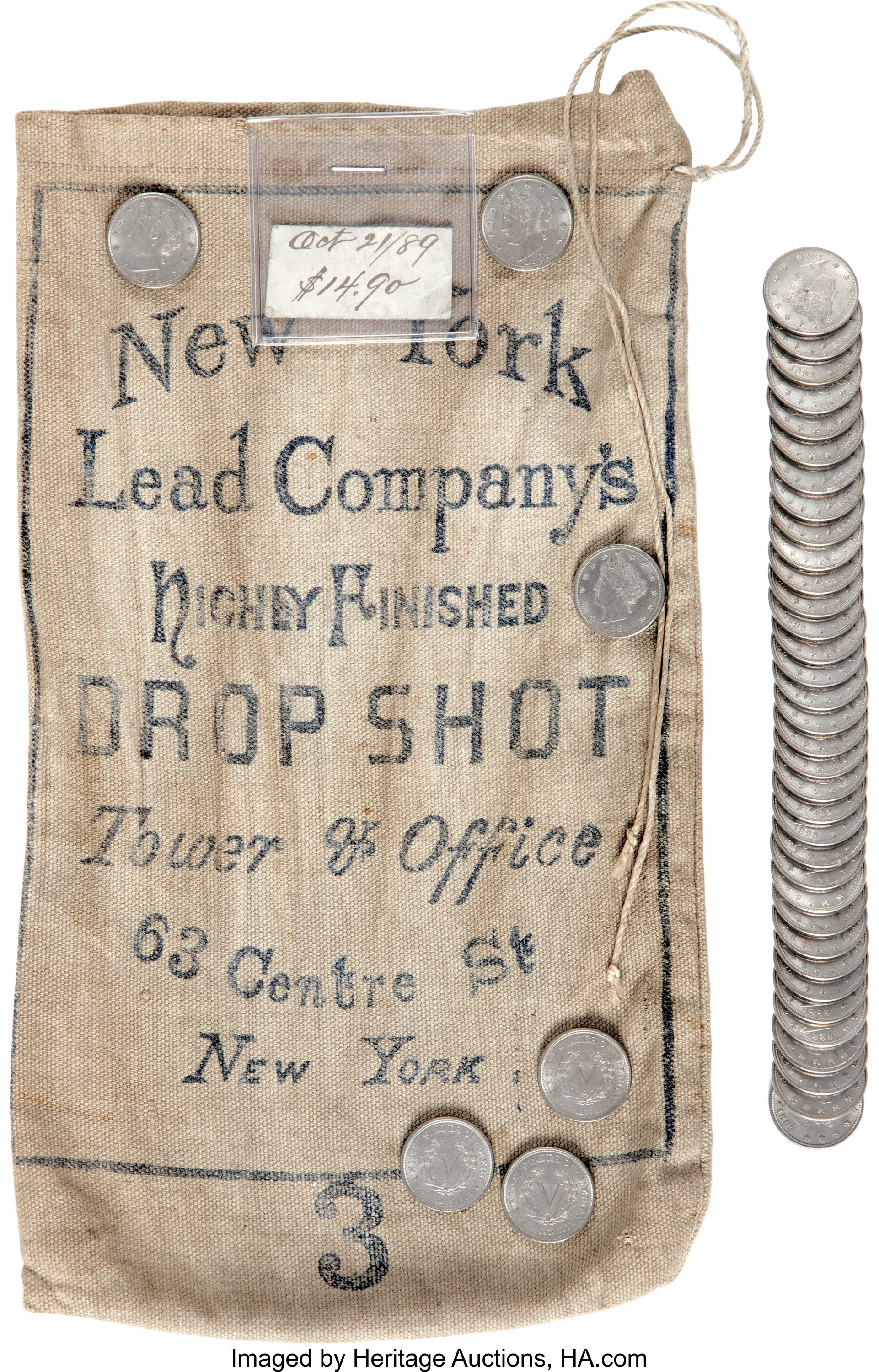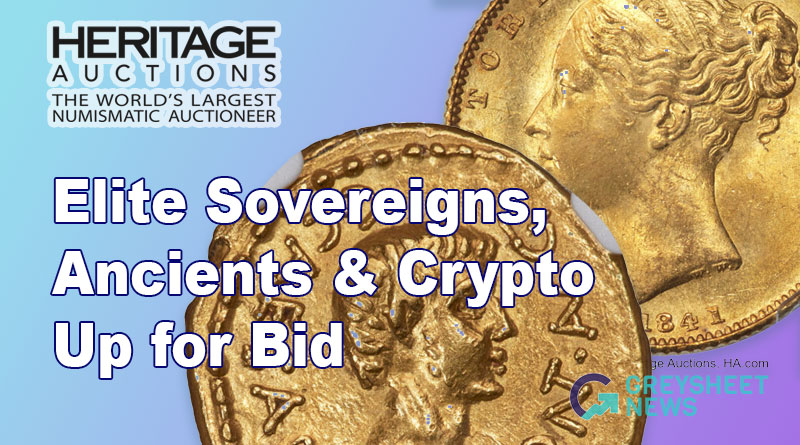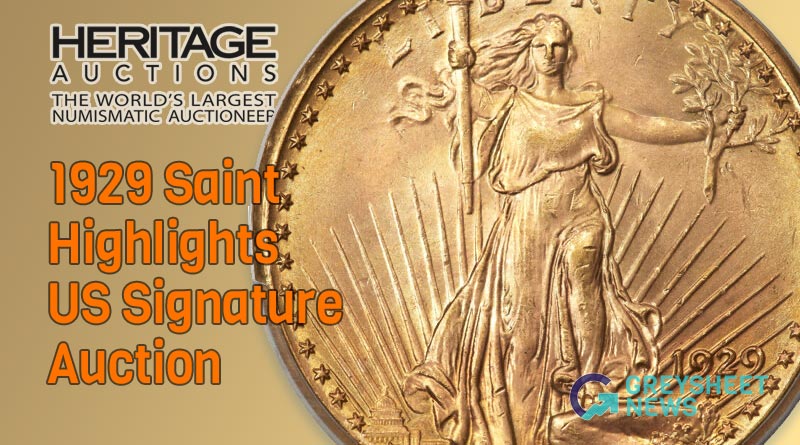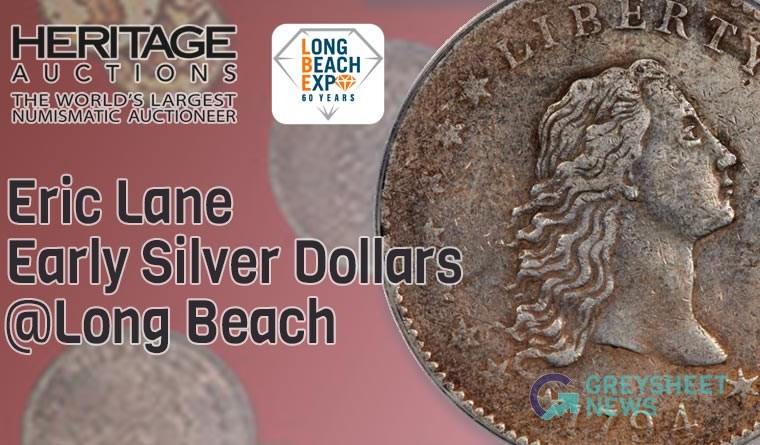Heritage Auctions had a busy couple of weeks recently in the Windy City during the Chicago Coin Expo (CCE) and Central States Numismatic Society (CSNS) auctions, which brought the Dallas-based coin sales firm a whopping $38,150,247. “It’s no exaggeration this season’s auction offered some of the most important discoveries and once-in-a-lifetime opportunities to own some of the rarest coins known to exist,” said President of Heritage Auctions Greg Rohan. “As expected, the hobby didn’t ignore the opportunities and we saw spirited bidding across every numismatic collecting category.”
Every area and era of United States numismatics was represented in the Chicago sales, not to mention many genres of world coins, with final hammer prices awarding bidders of virtually every income level. The sales, which spanned from April 20 through May 2, brought more than 14,000 lots of U.S and world money across the auction block, including 8,959 coin lots.
As is the case with any major auction series, we at CDN Publishing had been greatly anticipating these CSNS sales because such events usually serve as a shot in the arm for the market. Furthermore, from the analytical perspective, they provide us with invaluable data on pricing trends for various areas of the market.
Nearly two dozen coins sold for six-figure prices during the CSNS US Coins Signature Auction, with all lots from that sale realizing a total of $20,959,441. The most-expensive coin sold was a 1836 PCGS/CAC PR65+ DCAM Classic Head $2.50 Block 8, Second Head of 1837 that took $396,000 (including 20% buyer’s premium). Classic gold performed well at the CSNS auction. In fact, gold coins represent all of the top five lots sold at the event, in terms of price.
These gold coins include a 1915-S PCGS/CAC MS66 Panama-Pacific $50 Round sold for $336,000, 1854-S PCGS VF35 Liberty Head $2.50 that took $264,000, 1883 PCGS PR64DCAM Liberty Head $20 with a final bid of $204,000, and a 1911 PCGS/CAC PR67 Indian Head $10 that closed to the tune of $192,000.
Silver coins also held their own during the event, led by the extraordinarily rare 1797 PCGS AU55+ Draped Bust half dollar, which traded for $168,000. One of the best examples of the 1796 Draped Bust quarter – a proof-like MS62 specimen representing the first year of the denomination – took $144,000 in a PCGS slab. Rounding out the rest of the top five silver lots were an 1895 PCGS PR65DCAM Morgan dollar that sold for $108,000, a 1796 PCGS XF40 Draped Bust 15 Stars half dollar with a final price of $102,000, and an 1801 PCGS/CAC MS63 that commanded $96,000.
Copper coins had a strong performance, with a gorgeous 1793 PCGS MS63BN Wreath, Vine & Bars Edge Flowing Hair cent taking $78,000. A 1781 Medal Libertas Americana graded MS65BN by NGC realized $50,400. Meanwhile, a chocolate brown 1793 PCGS AU58 Flowing Hair half cent, snagged $49,200. Meanwhile, a 1969-S PCGS MS63RD Lincoln doubled die cent – one of the most valuable error varieties – notched a final bid of $40,800. Finally, a nice, red 1926-S Lincoln cent, an extremely challenging conditional rarity in any of the uncirculated grades, crossed the block grading MS64+ in a PCGS/CAC slab for $36,000.
Other neat offerings were an 1879-CC and 1879-CC capped die 48-piece Morgan dollar grading set with PCGS-slabbed pieces ranging from PR1 to MS64; this rare assemblage took $81,000. A Kellogg & Humbert gold ingot weighing 13.06 ounces and recovered from the wreckage of the SS Central America attracted a final bid of $84,000. Lively bidding among fans of early American coinage helped push an NGC MS65 SHILNG Pine Tree shilling on large planchet to a final price of $52,800. NGC-certified set of five 1943 one-cent experimental planchets went for $31,200.
Finally, there was the lot that we talked up a month ago on our podcast series, Both Sides of the Coin – a 297-piece hoard of 1883 No Cents Liberty nickels in a cloth bag dating from October 2, 1889. The hoard was probably assembled when the public thought the US government would recall “no cents” nickels due to their being widely gold plated and passed off as $5 Liberty Head half eagles. At any rate, this numismatic time capsule went to the lucky bidder who offered $9,600.
Other highlights include the sale of a US discovery piece, a 1666 3 Speciedaler of Frederik III of Norway, which sold for $432,000 and led sale of more than 4,000 coins in the CCE World Coins Signature Auction. That event, fielding more than 4,000 lots, also offered an NGC-certified Golden Jubilee 11-piece proof set honoring Queen Victoria’s 50th anniversary on the throne, selling for $156,000. Other outstanding offerings included a 1680 Charles II Gold Cob 8 Escudos, which took $84,000, and a 1709 Philip V gold Cob 8 Escudos that sold for $56,400. Canadian coin enthusiasts surely were enticed by an NGC PR65 1812 Bon Pour Deux Sous token. With its origins in Lower Canada, this piece, thought to be a pattern for proposed coinage, went for $50,400.
Paper currency had its time in the spotlight during the CSNS Currency Signature Auction and CSNS World Currency Signature Auction. “Number One” notes – those with a serial number of “No. 1” brought big money, with a Serial Number 1 $20 1891 PCGS VF35 Treasury Note selling for $114,000. A Serial Number 1 1891 PCGS N62 $5 Treasury Note autographed by Treasurer of the United States John Burke (who was appointed to that in 1913 by President Woodrow Wilson) took a whopping $102,000. Also batting a homerun for Serial No. 1 currency was a 1918 $10 Federal Reserve Note graded Very Choice New 64PPQ by PCGS that realized $87,600. Also making headlines is a dazzling $500 1922 Gold Certificate graded by PCGS as About New 53 that sold for $90,000 and an 1880 PMG VF30 $100 Black Back Silver Certificate that closed for $87,000.
Two 100 dinar notes from Iraq made stunning showings, with a 1942 specimen taking $30,000 and a 1931 specimen selling for $24,000. A 1935 $25 French Text Note from Canada, richly adorned in red and lavender print, traded for $22,800, while a first-serial number Commonwealth of Australia £5 ND (1954-59) Specimen note found a new home for $21,600. Then comes what is arguably one of the most popular varieties among all of world currency: an example of the Canadian 1954 Devil’s Face currency; this oddity, which appears to show the gnarly face of the Devil in the curls of Queen Elizabeth II’s hair, appears on a $1,000 note that snared a final bid of $19,200.

Download the Greysheet app for access to pricing, news, events and your subscriptions.
Subscribe Now.
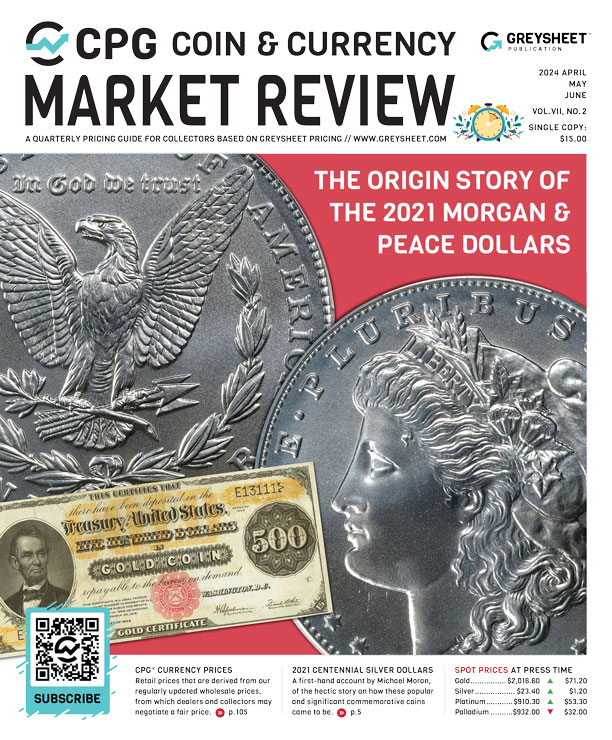
Subscribe to CPG© Coin & Currency Market Review for the industry's most respected pricing and to read more articles just like this.
Source: Heritage Auctions


